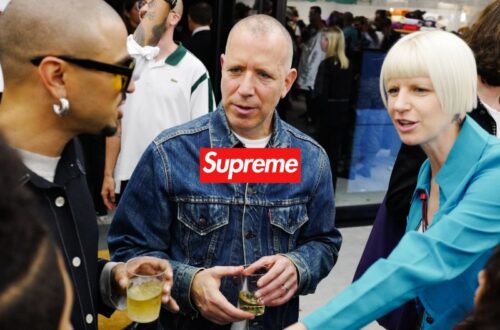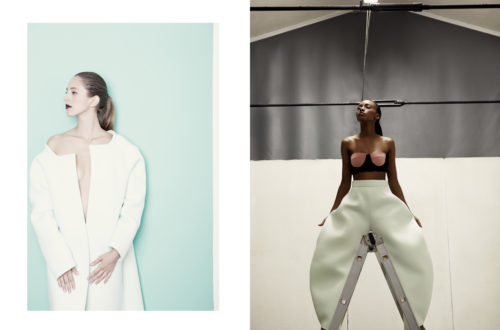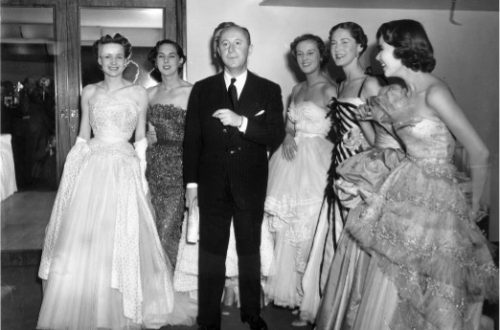
Customer Experience (abbreviated CX) is the overall experience customers have throughout their relationship with the company: not just shopping, then, but an interaction/relationship that includes customer care and support and interaction with the brand. Retail stores are a crucial marketing tool for retail brands. For a retail store to be successful, customers must be drawn in from the outside in. This will encourage them to make more purchases and develop a stronger bond with the brand as a whole. The layout of a company’s retail locations should integrate into the larger brand narrative while also taking into account key requirements. Given that people are accustomed to purchasing expensive goods without first seeing and touching them in a store, the epidemic has expedited the shift to online luxury brand shopping.
When stores were closed during the worst of the crisis, it became important to provide a seamless and quick online retail experience while ensuring sure the proper inventory is available at the right location and the right time. The installation of online sales platforms and digital content initiatives are being accelerated by all brands. Excellence in retailing is essential; this calls for the knowledge and care of beauty experts as well as inventiveness at points of sale. Digital tools are being aggressively incorporated by brands to improve the customer experience and draw in new customers.
Luxury firms are placing more and more emphasis on an omnichannel customer journey as a result of digital transformation and e-commerce. The customer has higher expectations for service and experience in the modern environment. They want to decide how, when, and where they explore the world of various Maisons, sample the wide range of goods, and take in the atmosphere and experience. All client journey touchpoints must be good, smooth, and natural while also being memorable, exceptional, and unique.
The “real” luxury experience has undergone a radical transformation as a result of the digital age’s enlargement and enrichment of its meaning. The digital enables the dematerialization and removal of any physical limitations that may be present, as well as the facilitation and amplification of the notion of service that is the basis of the luxury industry.
The beauty of digitization is that newer, quicker, richer features are constantly being added. The growing multichannel habits of our clients are one of the many trends that have been influencing our businesses’ strategy in recent years. Today’s businesses must “show up,” go where no luxury brand has gone before, and be present where their customers expect them to be. In actuality, pushing boundaries, discovering new vistas, and reinventing oneself are all a part of what luxury is all about.
Louis Vuitton: Transforming Magnificence Into and Immersive Omnichannel Experience

Louis Vuitton created a transparent, cleaner user experience (UX) and placed a strong emphasis on the demands and concerns of their customers in order to digitize the opulent experience of visiting one of their stores while maintaining the advantages of an eCommerce user and customer experience. We made sure that nothing stood between a user and the products they browsed by assisting with the integration of Louis Vuitton’s content management system (CMS), accentuating the magnificence of Louis Vuitton itself.
It is inaccurate and a misperception of the depth required to help facilitate the shopping experience to presume that all a company needs to do to provide an excellent user and customer experience is to design an intuitive interface. Louis Vuitton has made significant efforts to guarantee that consumers enjoy the benefit of boutique browsing through salespeople when it comes to enhancing the delight in every element of their customer experience, mirroring the kind of help users may expect while buying online as well. A company like Louis Vuitton would need to foresee what users would want when browsing rather than determining the type of information that customers need from the products that they view. With this kind of thinking, the LVMH marquee brand decided to invest in its WeChat Mini Program, enhancing the overall user and customer experience by educating users and giving them a personalized online experience.
Market research was essential in striking the ideal mix between a simple digital design and a digital strategy that is distinctively Louis Vuitton if the brand wants to have the most devoted customer base possible. Despite being a significant influence on fashion culture, Louis Vuitton is never satisfied. Its dedication to improving customer experience and adoption of technologies that equally powerful brands have not yet adopted shows how important it is to retaining customers.
Gucci: A New Innovative Virtual Experience

Customers who are hesitant to visit stores can now have a customized virtual experience thanks to the world-famous fashion powerhouse Gucci. The “fake luxury store” at the Gucci 9 hub in Florence is essentially a recreation of a journey to the Gucci store online. This enables staff to interact directly with customers around the world via their laptops and smartphones while livestreaming from a mock showroom and bringing things to the camera in response to consumer requests.
Connecting the brand’s around 300 owned stores and its five service centers in New York, Tokyo, Seoul, Singapore, and Shanghai is a virtual space where the best digital experience technologies come together. A focus on innovation that improves the entire customer experience by using cutting-edge CRM and workflow management tools. Alessandro Michele, the creative director, personally designed the showrooms, and the physical area mirrors their sensory aesthetics and outward appearance. There are several bilingual advisors within, as well as highly skilled personnel serving elite clients. professionals who oversee a genuinely omnichannel management of the customer’s relationship with the business, directly assisting customers globally through a seamless and fluid path connecting the many physical and digital touch-points.
Hermes: Unique Experiences in Unique Locations

Hermes’s global strategy of integrating distinctive retail experiences through their designs contributes to the company’s increased reliance and brand loyalty. Overall, the distinctive shopping experiences offered by the numerous retail sites throughout the globe support the uniqueness of the brand and connect it to the compelling Hermes brand narrative. One aspect of retail store design that aids in achieving design objectives is the provision of distinctive experiences to customers. Designing for the retail experience serves the strategic purpose of increasing consumer dependence on and overall brand loyalty. Thoughtful planning and design enhance the overall retail strategy, which in turn aids in boosting sales by stoking consumer interest and demand for the brand.
Only people with appointments that have been made months in advance are allowed into their main store in Paris. Window displays show the brand’s classic aspects, which are connected to their beginnings in the equine business. They also have a private rooftop access point that gives visitors a unique view of the city and has a remembrance of their heritage with a figure of a horse racer on the roof top to further emphasize the exclusivity and particular quality of the brand. During the holiday season, the store in New York City elevated the guest experience by offering an advent calendar-style activity. Every day included a brand-new, unique product that gave customers a distinctive chance to experience various aspects of their company over the Christmas season.
Their branch store in New York City’s Meatpacking District focuses on offering a distinctive experience to new and young brand customers by integrating interactive displays targeted to this target demographic’s interests, which include music, skateboarding, and other sports like cycling. The service staff are dressed in more informal items, including Hermes shoes and casual silks, to make the experience for the youthful clients warmer and inviting. Additionally, the shop offers exclusive amenities including a free coffee and champagne bar and lower-end goods starting at about $100.
The customer experience doesn’t end with a single transaction; rather, it marks the start of a potentially lifelong partnership between the company and the customer. Therefore, brands must be present for their customers at every turn. They must anticipate their needs and satisfy all of their wants.
A luxurious experience is all on feelings, especially happy feelings. This only occurs when the service exceeds the customer’s expectations because these feelings are what distinguish a forgettable transaction from a memorable encounter.
By Edoardo Tonini





